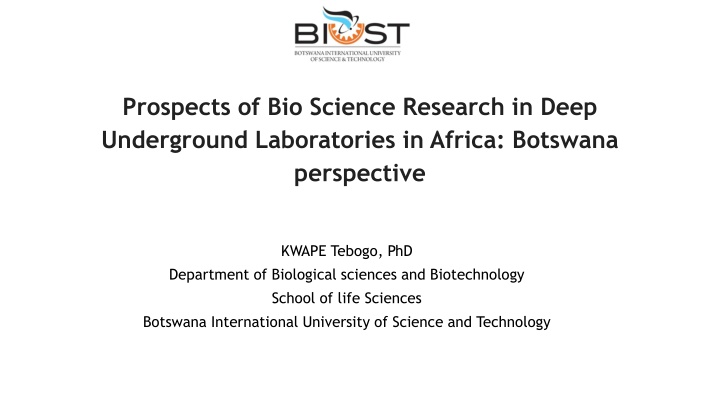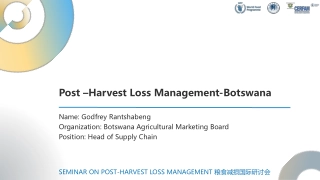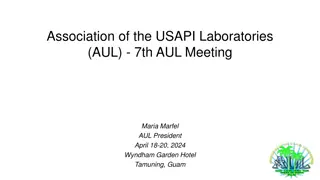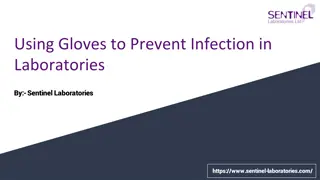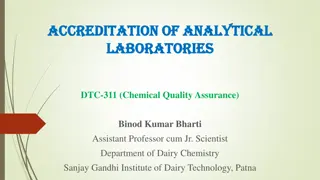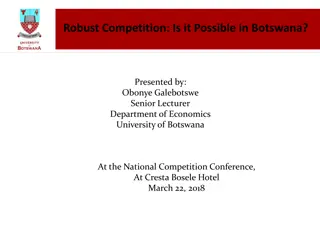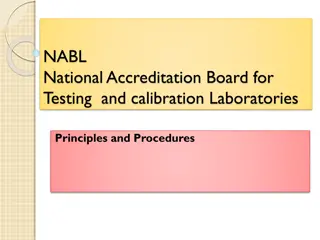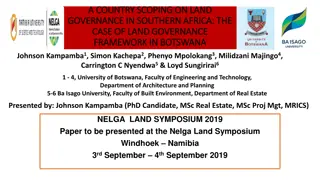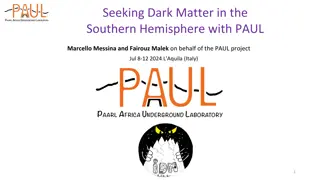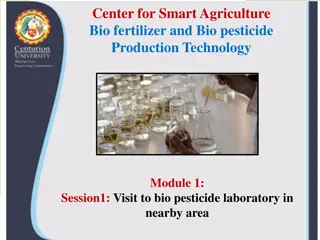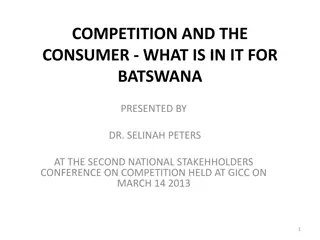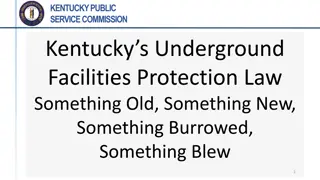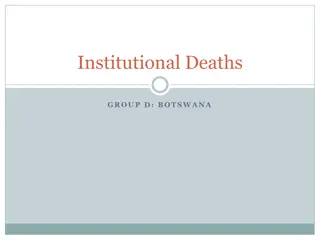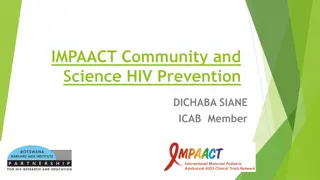Bio Science Research in Deep Underground Laboratories in Africa: Botswana Perspective
Key bio sciences research focuses on HIV/AIDS, hypertension, diabetes mellitus, cancer, and antibiotic resistance in Botswana. Prospects of research in deep underground laboratories and overcoming challenges posed by radiation.
Download Presentation

Please find below an Image/Link to download the presentation.
The content on the website is provided AS IS for your information and personal use only. It may not be sold, licensed, or shared on other websites without obtaining consent from the author.If you encounter any issues during the download, it is possible that the publisher has removed the file from their server.
You are allowed to download the files provided on this website for personal or commercial use, subject to the condition that they are used lawfully. All files are the property of their respective owners.
The content on the website is provided AS IS for your information and personal use only. It may not be sold, licensed, or shared on other websites without obtaining consent from the author.
E N D
Presentation Transcript
Prospects of Bio Science Research in Deep Underground Laboratories in Africa: Botswana perspective KWAPE Tebogo, PhD Department of Biological sciences and Biotechnology School of life Sciences Botswana International University of Science and Technology
Introduction Some Key Bio Sciences Research HIV/AIDS Research Hypertension research Diabetes Mellitus research Cancer research Antibiotic resistance
Aims of Bio Sciences Research To overcome the burden posed by health challenges facing Africa: Botswana Finding new ways of disease treatment Harnessing alternative treatments to alleviate health challenges facing Africa/ Botswana
Possible effects of radiation on Bio science research The earth surface receives and absorbs radiation from the sun despite the extent of protection by the ozone layer. Possible interference by radiation in in-vitro and In vivo Bioscience experimentation Interference on researches involving micro organisms Model animals - modelling cancer, diabetes mellitus, HIV/AIDS and hypertension.
Why a need for Deep Underground Laboratories? Exclude the interference of background natural radiation in Bioscience research Establish mechanism of action from alternative treatments with minimum or no radiation interference Inform the future for possible introduction of Deep Underground patient treatment centres, where treatment can be received with minimum background natural radiation Can help compare research results undertaken on the surface laboratories to those from Deep Underground Laboratories
Deep Underground laboratories in Africa Currently no Deep Underground Laboratory operating in Africa There is however an upcoming underground laboratory named Paarl Africa Underground Laboratory (PAUL)
Botswana perspective Botswana perspective Botswana s climate is regarded Semi-Arid Characterised by prolonged spells of heat and radiation from the sun The high radiation hypothesised to pose an effect on Bio Sciences research performed in on- surface laboratories Critical Bioscience researches for the treatment of Critical diseases like HIV/AIDS, Cancer, Diabetes mellitus and Hypertension.
The Need for Deep Underground Laboratory in Botswana Deep underground laboratory (DUL) critical to evaluate the possible detrimental effect of radiation on Biosciences Research Main Hubs of Bioscience Researches faced with high intensity radiation most duration of the year Availability of vast space at Botswana International University of Science and Technology (BIUST) makes it possible to construct a Deep Underground Laboratory for Botswana and Africa
Conclusion Conclusion Deep underground laboratories will provide perspective on the possible benefit or disadvantages of performing the mentioned research in deep underground laboratories Possibly inform the future regarding disease interventions that may employ Deep Underground Spaces.
REFERENCES https://wmo.int/suns-impact-earth https://doi.org/10.1016/j.biomaterials.2023.122267 https://doi.org/10.3389/fpubh.2023.124 9742
